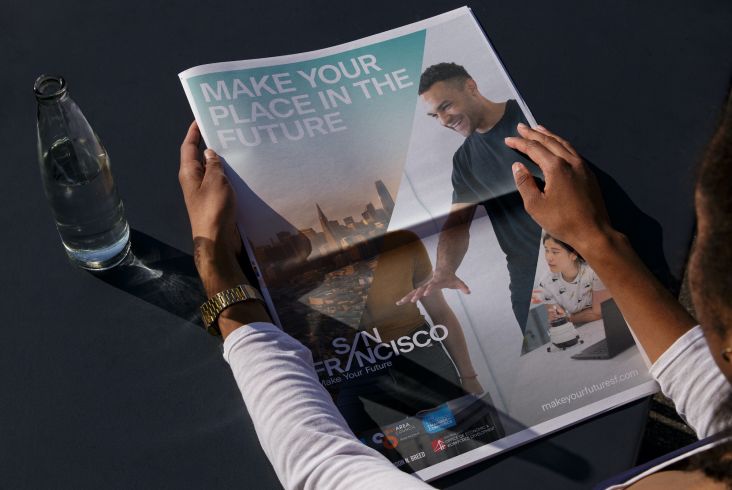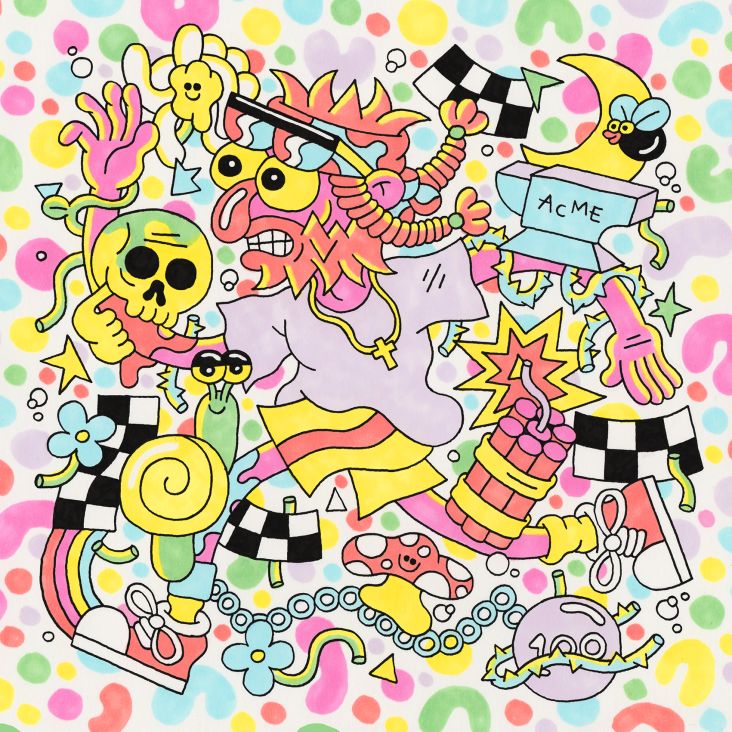16 frequently asked questions answered to help you become a graphic designer
Graphic design is a mysterious profession to many, but it's easily explained. We team up with Shillington to provide a jargon-free FAQ covering all aspects of graphic design.

Image courtesy of Shillington
To many people, the job title 'graphic designer' is mysterious. Typically, working graphic designers find that friends and even close family don't really understand what they do. But even if you're not sure what graphic design is about, you may already have a passion for the kind of things it involves.
Have you always been fascinated by art and design? Do you find yourself constantly admiring how billboards, magazines, and websites look and feel? Maybe you've even considered pursuing a career around art but are unsure where to start.
The truth is, graphic design is a field that many people only stumble upon by chance. But it doesn't need to be that way. With the right guidance and knowledge, you can turn your passion for creativity into a rewarding and well-paid profession.
A good place to start is by answering all your questions about what graphic design is and how you get involved in it. To help you out, we've partnered with Shillington to provide you with clear and easy-to-follow answers.
And Shillington certainly knows what they're talking about. This leading design school has helped countless students launch successful careers in graphic design through its short and intensive courses, which take place both in-person and online. You can learn more about studying with Shillington here.
We've collaborated with Shillington to answer your most burning questions about graphic design. And below, we do so in plain English that everyone can understand.
1. What does a graphic designer do?
In the most basic terms, a graphic designer combines text and images to perform a function. Whether in the form of a printed brochure or a digital app, the most important part is 'to perform a function'.
Artists create art for its own sake. But graphic designers create content that has a clear and defined purpose. So ultimately, art can only be judged subjectively, but graphic design can be judged objectively: i.e., did it achieve its purpose?
In practice, a graphic designer typically works with various media, including both print and digital, to create designs that meet the needs of their clients or employers. Their day-to-day tasks may include creating logos, icons and other graphics; brochures, flyers and posters; packaging and product labels; website layouts and app interfaces; and more.
2. What is the average salary of a graphic designer?
The average graphic designer's salary varies across cities, regions and nations over time and depends largely on supply and demand. For example, the average salary of a graphic designer in the UK is currently £31,874, according to Reed.co.uk. This time last year, however, that figure was £28,469.
In 2023, the UK salary range typically falls between £28,017 and £37,894, according to Reed. Meanwhile, in New York, Salary.com reports that the average graphic designer salary as of 27 February was $61,816, with the salary range typically falling between $55,843 and $65,706.
These figures should, however, be taken with a pinch of salt because they're based on job ads with published salaries. In truth, though, most graphic design jobs aren't advertised on job sites, and of those that are, many don't have salaries attached but are negotiated with the successful candidate. Many graphic designers are also freelance, so their earnings are generally kept to themselves.
Most people working in graphic design, however, do agree that it's a well-paid profession overall. For more on this topic, read The Complete Graphic Design Salary Breakdown.
3. How much does a freelance graphic designer make?
Rates for freelance graphic design can vary wildly because it depends on factors such as your experience level, the specific client (how much they can afford), the complexity of the project, the time frame of the project, and so on. Most freelance graphic designers will start with a lower rate and raise their rates over time as they build their portfolio and reputation.
As a ballpark, Creative Circle estimates average freelance rates in New York to be $30-$35/hour for a junior, $45-$55/hour for a middleweight designer, and $60-$80+/hour for a senior. In the UK, Major Players estimates an average day rate of £150-£200 for a junior, £250-£275 for a middleweight and £300-£400 for a senior.
Again, we shouldn't take such figures as gospel. Rates vary a lot from sector to sector and depend on levels of experience. For more on this topic, read How to Price Your Services as a Freelance Graphic Designer.
4. How do I become a graphic designer?
Becoming a graphic designer is largely a combination of education and practice. You can't have one without the other. You need to study the fundamentals of design theory in order to know what you're doing. But equally, following lessons alone will only go so far. Like driving a car, you'll learn most of your skills by actually doing it.
Although some professional graphic designers are self-starters, most will have taken some sort of course. That might be a degree, but it doesn't need to be. Shorter, more intensive courses such as those offered by Shillington offer more focused attention on combining education with real-world practice, which can get you there faster.
5. How do I become a freelance graphic designer?
In theory, anyone can become a freelance graphic designer at any time: you don't need a particular qualification or level of experience. The challenge is finding a client who'll pay you.
That becomes easier if you can show you know what you're doing by developing a strong portfolio of work. And that requires experience. You can gain that experience, though, in a number of ways: through taking a degree or other type of course in graphic design, internships, entry-level positions, collaborating with other designers, working for friends or family, pro bono work, or self-initiated projects.
The more education, training, and experience you have, the easier it is to build a career as a freelance graphic designer. However, there's no 'right' time to do so: some designers leave it until late in their career, while others work from the beginning as freelancers and never get a salaried job.
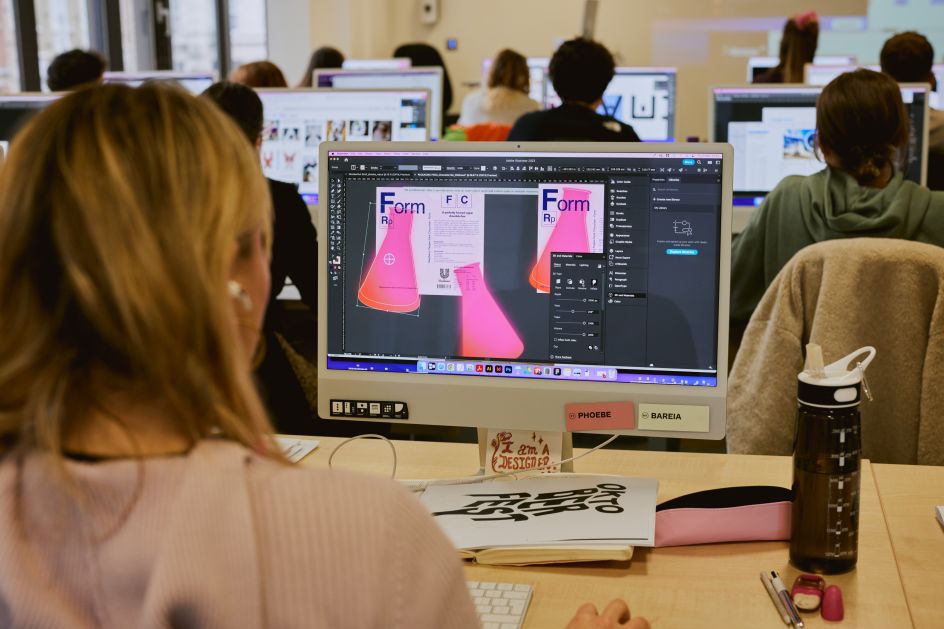
Image courtesy of Shillington
6. How do I become a graphic designer without a degree?
You can still become a graphic designer without going down the usual degree route. Many graphic designers have carved out successful careers through self-study alone: by following online tutorials, reading books, watching training videos, and a lot of trial-and-error. For those who want a more structured approach but don't want to spend three years at uni, there are short, intensive courses offered by companies like Shillington, which allow you to study three months full-time or nine months part-time.
7. What is the typical career path of a graphic designer?
As a graphic designer, you'll usually start as a junior graphic designer. The word 'junior' here is nothing to do with age; it's purely about your (limited) experience. You'll typically work between one and three years as a junior under the guidance of senior designers.
The next stage up is usually called middleweight graphic designer, mid-level designer or simply 'graphic designer'. You'll take on more complex design projects and be expected to work without support. You may also be asked to supervise and train juniors. You should typically expect to spend three to five years at this level.
Up from a middleweight graphic designer is a senior graphic designer. It means you'll be responsible for managing projects from start to finish and will probably lead a team or teams. You'll also talk directly to clients and be responsible for managing timelines and budgets. A senior is the highest level for a graphic designer. From there, you may progress to more strategic and executive roles such as art director, creative director or CEO or found your own design studio.
8. What does a junior graphic designer do?
The role of a junior graphic designer is to support the senior design team. You'll be expected to complete some tasks independently, including preparing final artwork files for production and creating simple designs, such as banners, icons, or basic layouts for print or web projects. You'll also assist in larger projects, such as designing a brand's website or visual identity, as part of a team of designers led by a senior. As you gain experience, you'll be given more responsibility and progress to mid-level positions.
9. Who is the best graphic designer in the world?
Graphic design is not a sport, and there's no way to measure how "good" graphic design is beyond whether or not it serves its function. So it's not really possible to say who the "best" graphic designer is.
However, some graphic designers have created a strong reputation for consistently creating effective, well-known and long-lasting designs for big, global brands. That doesn't mean their work is necessarily "better" than less famous names, but it does mean that it is widely accessible and so can act as useful inspiration for your own design efforts. They include Paul Rand, Saul Bass, Paula Scher, Massimo Vignelli, Eddie Opara, Milton Glaser, David Carson, Susan Karen, Michael Bierut, Neville Brody, Stefan Sagmeister, Jessica Walsh, and others.
10. Which software do graphic designers use?
You don't need to use particular software to create graphic design: what's important are the results rather than how you got there. However, if you're working with other designers, using the same software makes it easier to collaborate on material together. Typically, design studios will expect you to be familiar with tools in the Adobe Creative Cloud, which requires a subscription and includes Photoshop, Illustrator and After Effects. When it comes to UI and UX work, however, Figma and Sketch are currently more popular. Freelancers, however, have more freedom to use a wider range of apps, and popular options include the Affinity suite and CorelDraw.
11. Where do most graphic designers work?
There is a range of places where graphic designers work. The most visible are design studios, aka design agencies, which provide services for clients. Alternatively, most big brands employ in-house design teams, which create designs purely for that company. Graphic designers are also commonly employed by book and magazine publishers, advertising agencies, and media companies such as broadcasters. Some graphic designers work in education, often part-time, teaching design courses at universities, colleges, and other educational institutions. Finally, many graphic designers work as freelancers, either at home or in co-working spaces.
12. Which equipment is best for a graphic designer?
The main piece of equipment a graphic designer needs today is a computer that can run graphic design software. In practice, that means it will run either the Windows or macOS operating system: Chromebooks aren't suitable.
You'll also need a high-quality monitor to ensure accurate colour representation and details and a printer and scanner. It's useful to have an external hard drive for backing up your files and storing large files, although alternatively, you could pay for cloud storage. Finally, as you'll be spending much of your life sitting down, you'll want to invest in a spacious desk and a comfortable and ergonomic chair to prevent back problems later in life.
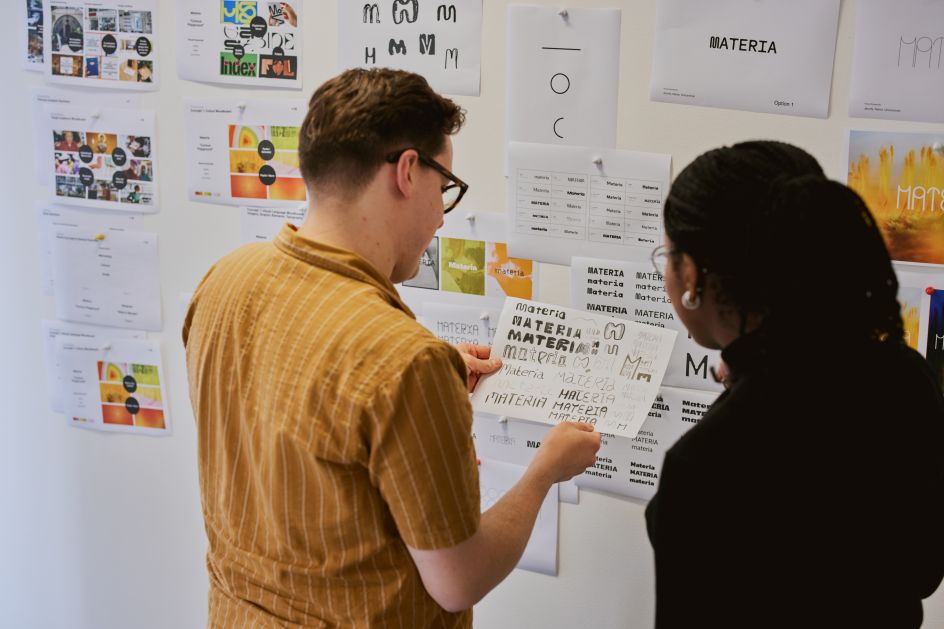
Image courtesy of Shillington

Image courtesy of Shillington
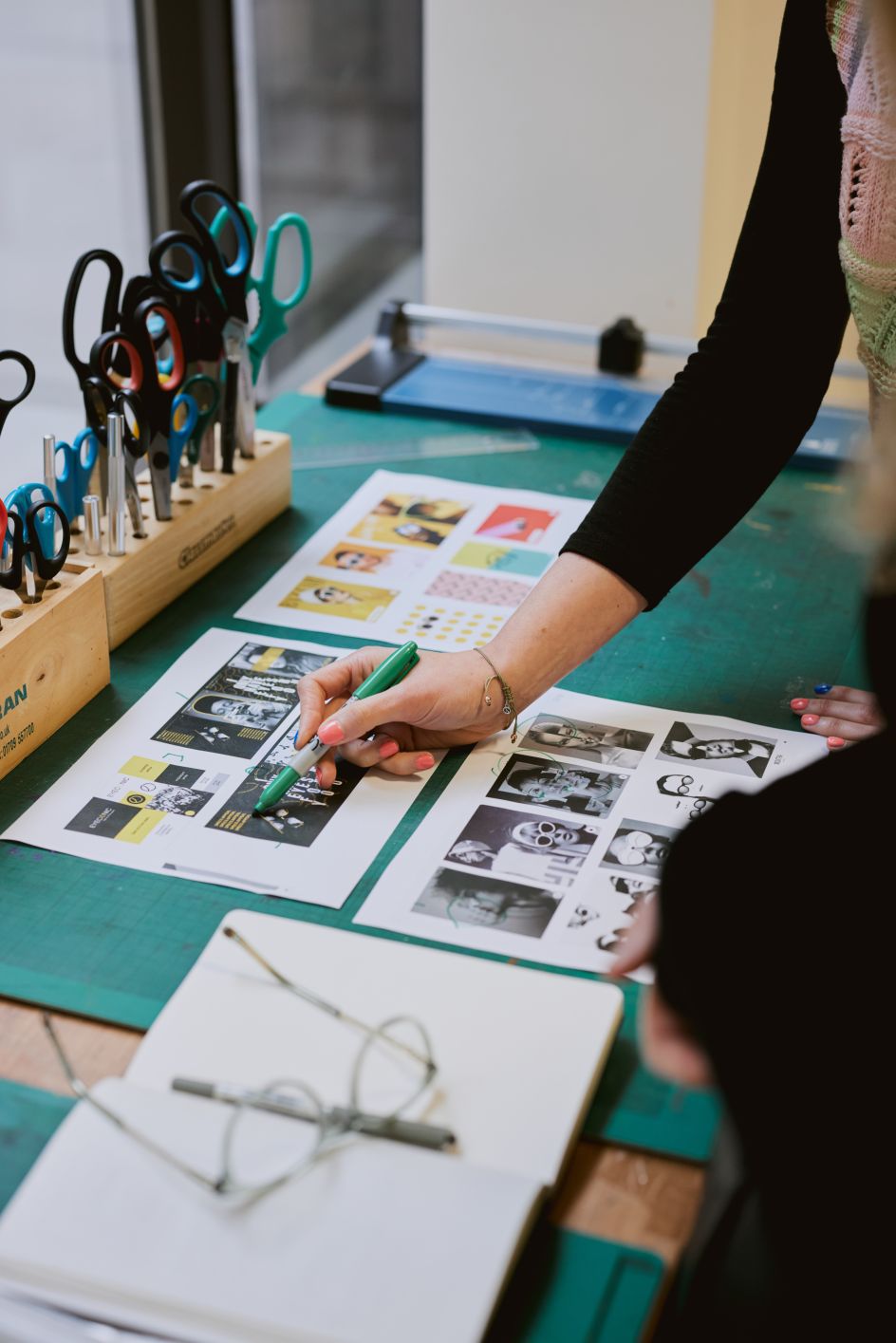
Image courtesy of Shillington
13. What books should I read to learn graphic design?
There are many classic books that can teach you the foundational principles of graphic design, including The Elements of Typographic Style by Robert Bringhurst and Grid Systems in Graphic Design by Josef Müller-Brockmann. And there are lots of modern books that can help you apply those principles to the digital, multimedia age, such as Graphic Design School by David Dabner, Sandra Stewart and Abbie Vickress, and Now Try Something Weirder by Michael Johnson. Reading a balance of both will make a big difference in helping you improve your understanding of graphic design.
14. What courses are available to learn graphic design?
Many courses are available for learning graphic design, from traditional in-person classes to online courses and tutorials.
You can get video-based lessons from platforms such as Skillshare, Udemy, Coursera and LinkedIn Learning, which are very affordable. On the downside, you won't get much, if any, interaction with the teachers, and the quality of these courses is variable.
At the opposite end of the scale, you can study graphic design at university for three years. However, you should consider your course carefully, as some traditional design degrees are heavy on theory but light on real-world practice.
Between these two extremes, short courses such as those offered by Shillington – which offers the choice between online and in-person instruction – are typically focused on real-world projects, and instruction comes from professional designers working in the field.
15. What are hiring managers looking for in a graphic design portfolio?
When managers look at a graphic design portfolio, they typically don't have much time to spend on it. So they want to see evidence of good design work across a range of areas, presented clearly and simply. That said, a good portfolio isn't just a selection of eye-candy images. Managers are usually interested not just in the final artwork but in how you go there. So it helps to include some text description of what you did on the project, as well as behind-the-scenes images if possible. For more advice, read these expert portfolio tips from Shillington teachers.
16. How soon will I find a job after graduating from a graphic design course?
Typically, it can between a few weeks and several months to find a job after graduating from a graphic design course. But it's tough to give a clear figure because it varies depending on many factors.
The most important one will be the local job market: if no one's hiring right now, you may have to cast your net wider. It also largely depends on your abilities, your portfolio's strength, and how much effort you put into looking. A job is unlikely to fall into your lap, so you must be proactive. It's important to start networking as early as possible and watch for opportunities, even while on your course.
If you study with Shillington, course leaders and tutors can assist with your job search and frequently share career advice on the Shillington blog. There's even a specific Jobs Board for employers seeking Shillington graduates.





 by Tüpokompanii](https://www.creativeboom.com/upload/articles/58/58684538770fb5b428dc1882f7a732f153500153_732.jpg)

 using <a href="https://www.ohnotype.co/fonts/obviously" target="_blank">Obviously</a> by Oh No Type Co., Art Director, Brand & Creative—Spotify](https://www.creativeboom.com/upload/articles/6e/6ed31eddc26fa563f213fc76d6993dab9231ffe4_732.jpg)














